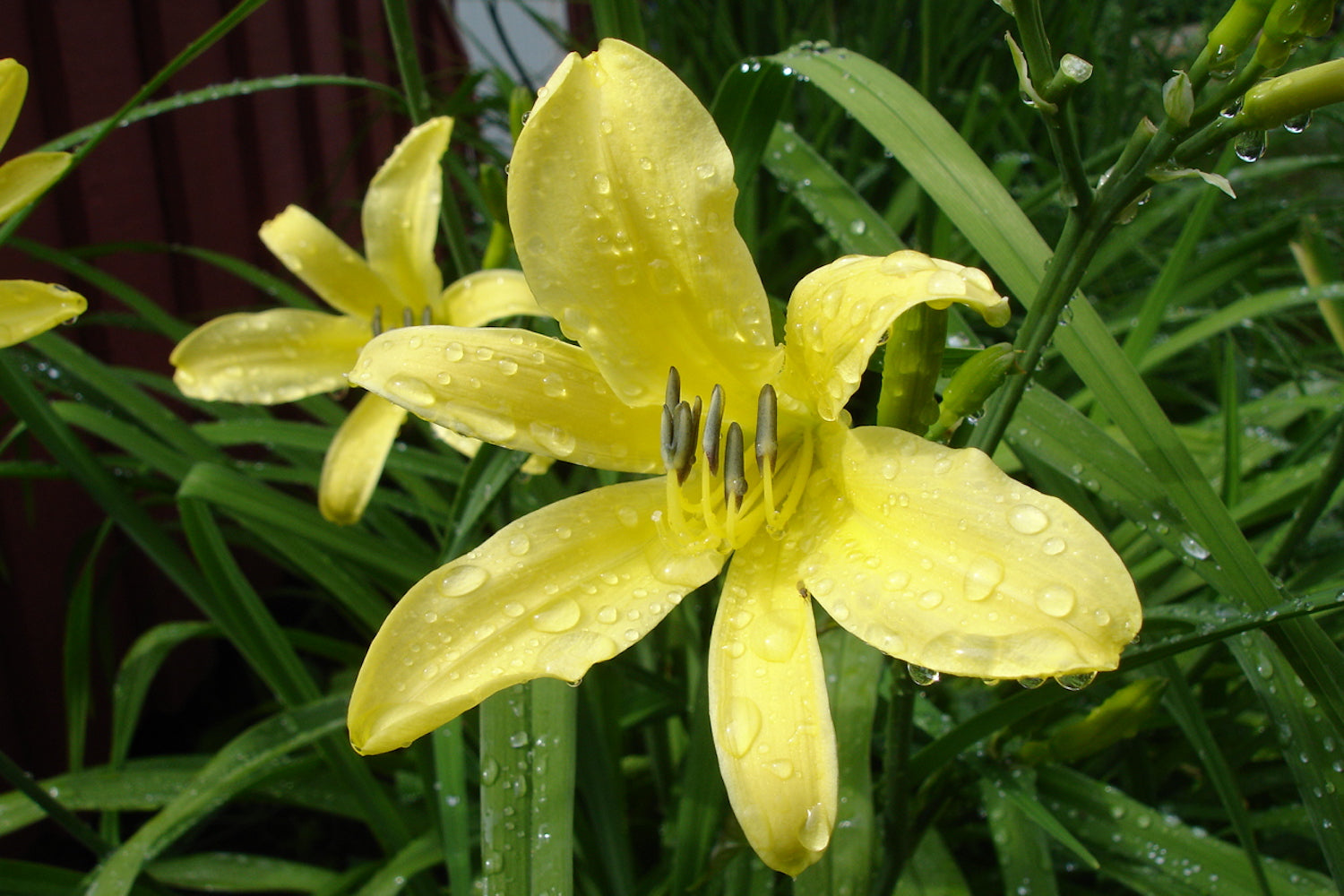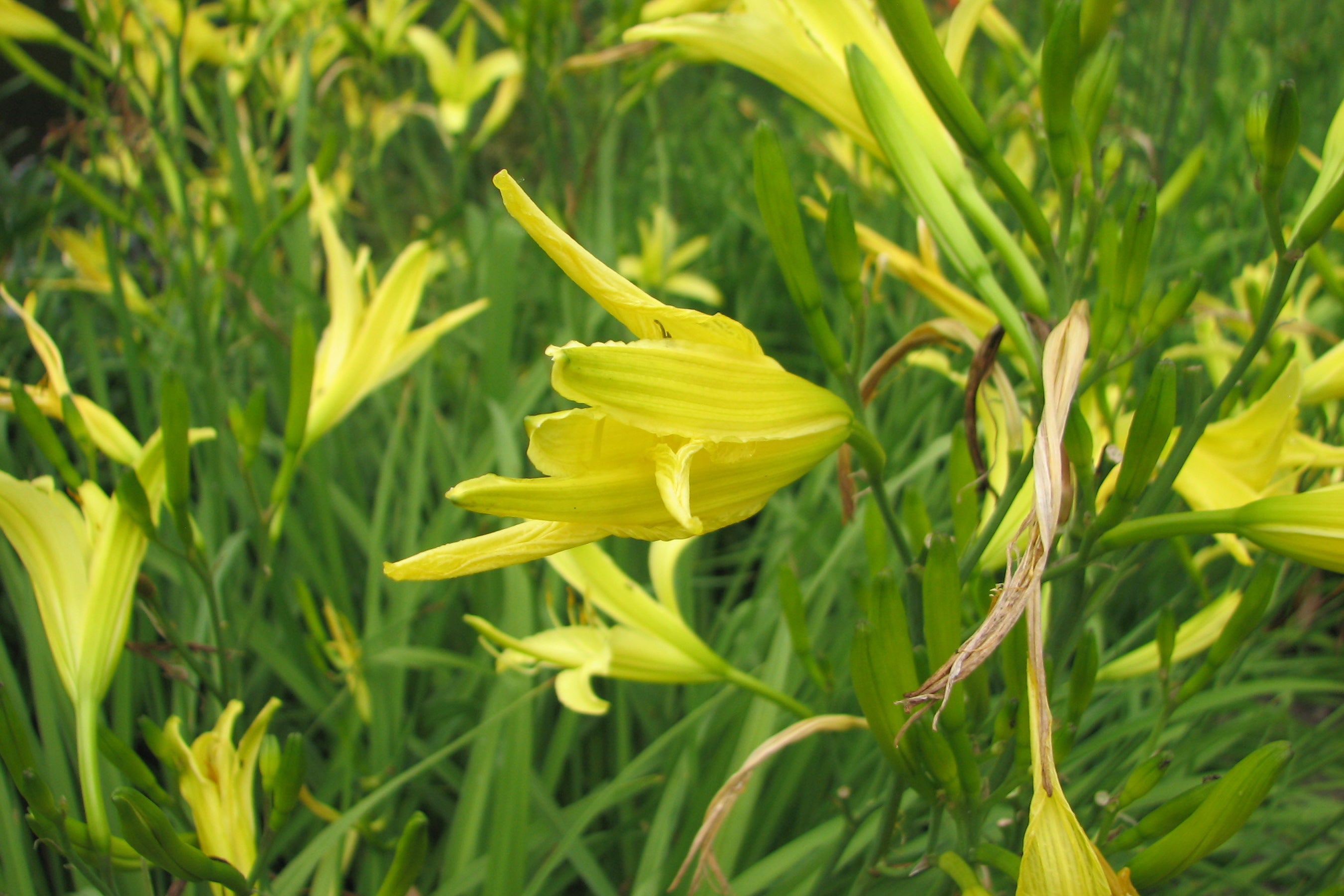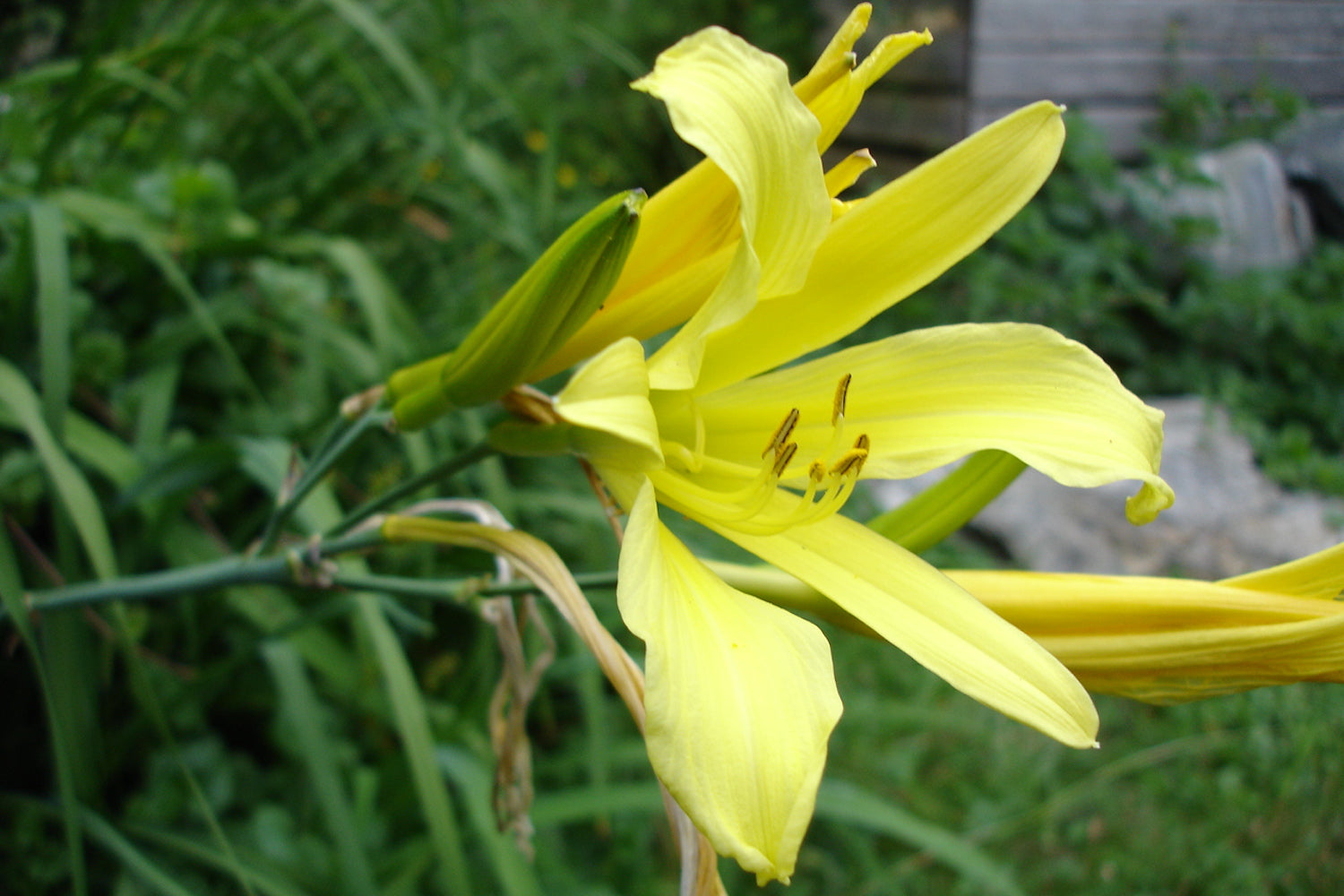Hemerocallis citrina
Approx. 0.5 litre pot
About this cultivar:
Hemerocallis citrina features trumpet-shaped, lemon yellow flowers on scapes above a thick clump of arching, blade-like, leaves. Flowers are very fragrant. Native to eastern Asia and China. It grows in forest margins, grassy fields and slopes. The tubers, inflorescences, buds and flowers can all be cooked and eaten. Dried or fresh flowers, sometimes called 'gum jum' or 'golden needles' are used in Chinese cuisine for dishes including hot and sour soup, daylily soup, Buddha's delight, and moo shu pork. The dried flowers are also used in Japanese, Korean, Thai, and Vietnamese cooking.
This species is a nocturnal bloomer so the flowers typically open up near sunset and close the morning of the following day. Has the Royal Horticultural Society Award of Garden Merit (RHS AGM), so not just for eating!
Specific epithet means lemon-coloured or resembling citron. In this case for the lemon-yellow flowers.
- Position: Full sun, partial shade
- Soil: Almost any soil, grows well in Ballyrobert
- Flowers: June, July, August
- Other features: Royal Horticultural Society Award of Garden Merit (RHS AGM), Grows well in Ballyrobert
- Hardiness: H6 - Hardy in all of UK and northern Europe (-20 to -15°C), Fully hardy - grows well in Ballyrobert!
- Habit: Clump forming
- Foliage: Semi evergreen
- Height: 90- 120 cm (3 - 4 ft)
-
Spread: 60 - 90 cm (2 - 3 ft)
- Time to full growth: 2 to 5 years
- Plant type: Herbaceous Perennial
- Colour: Green, yellow
- Goes well with: Grasses
About this genus:
Hemerocallis (hem-er-o-kal-is) from the Greek hemeros (day) and kallos (beauty) is commonly known as the Daylily. Hemerocallis is now placed in family Xanthorrhoeaceae but formerly was part of Liliaceae (which includes true lilies) so technically it is not really a lily at all! Who cares? We still love them!
Hemerocallis are perennial plants, whose name alludes to the flowers which typically last no more than 24 hours. The flowers of most species open in early morning and wither during the following night, possibly replaced by another one on the same flower stalk the next day. Believe it or not, some species are night-blooming. This genus is popular worldwide because of the showy flowers and hardiness of many kinds. There are over 60,000 registered cultivars- isn't that amazing!?!?
Hemerocallis is native to Eurasia, including China, Korea, and Japan. The flowers of some species are edible and are used in Chinese cuisine, but I must say I have never ate them (even though I lived in China for a year). Although perhaps I will soon because the cultivars we have in our garden at Ballyrobert flower like mad. Basically, they grow almost anywhere that isn't full shade. From our photos you may see we even grow a few under trees.
Hemerocallis plants pair well with just about everything, but try them with grasses (Miscanthus?) for wonderful colour and texture combinations.










